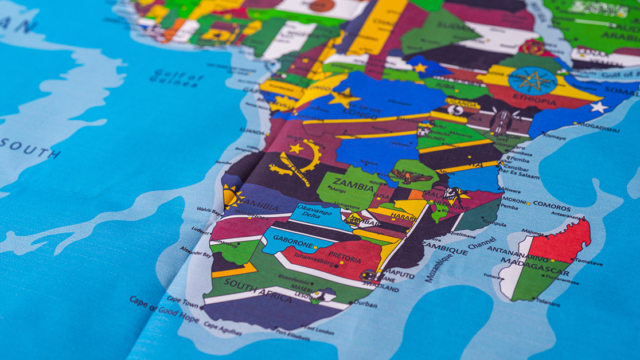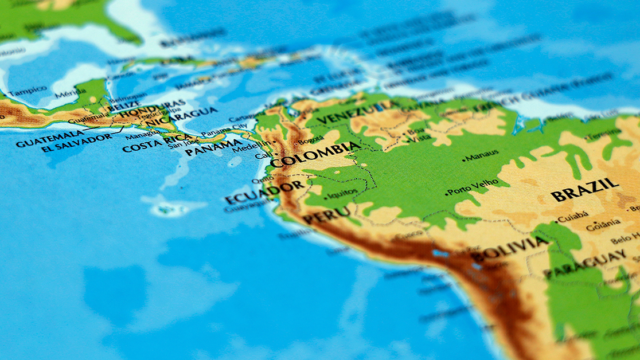Cross-border payments and remittances are crucial to Africa’s financial infrastructure, supporting millions of families and facilitating trade. As Africa continues its economic development, the need for efficient, affordable, and accessible payment systems has never been more crucial.
The importance of cross-border payments in Africa
Africa is one of the world’s largest recipients of remittances. According to World Bank data, remittance flows to sub-Saharan Africa stood at approximately USD 54 billion in 2023, with projections indicating a 1.5% increase this year. Remittances are a lifeline for several African countries grappling with food insecurity, drought, supply chain disruptions, floods, and debt-servicing difficulties. The largest recipients in the region include Nigeria, Ghana, Kenya, and Zimbabwe, while countries heavily dependent on remittances include The Gambia, Lesotho, Comoros, Liberia, and Cabo Verde. For example, remittance flows to The Gambia were equivalent to 23% of the country’s gross domestic product last year, making it one of the top 10 countries by share of GDP.
Beyond remittances, cross-border payments are key to intra-African trade. The African Continental Free Trade Area (AfCFTA), launched in 2019, aims to transform trade and foreign direct investment across the continent with a population of 1.3 billion. The value of intra-African trade among 11 countries with available data stood at USD 85.3 billion in 2023. Therefore, efficient cross-border payments are crucial to the continued growth of this trade, allowing businesses to transact seamlessly across borders.
Current channels for cross-border payments and remittances in Africa
Africa’s cross-border payment and remittance landscape is diverse, comprising various channels, each with its strengths and challenges:
Traditional banking
Banks have historically been key players in cross-border payments but face criticism for slow processing times and high fees. According to World Bank data, banks remain the costliest service providers for cross-border transactions, with an average cost of 11.48%.
Money transfer operators (MTOs)
MTOs like Western Union and MoneyGram offer faster services than banks, but their fees can still be relatively high, particularly for small transfers.
Mobile money
Mobile money services, such as M-Pesa in Kenya, have transformed cross-border payments by allowing users to send and receive money via mobile phones. As of 2022, 28% of adults across sub-Saharan Africa had a mobile money account.
Fintech solutions
The rise of fintech companies like Flutterwave and Chipper Cash has further revolutionised cross-border payments by offering lower fees and faster transaction times. These platforms are becoming increasingly popular among the African diaspora.
Challenges in the African cross-border payment ecosystem
Despite progress, several challenges continue to impact the efficiency and accessibility of cross-border payments and remittances in Africa:
High transaction costs
The World Bank states that sub-Saharan Africa remains the most expensive region to send money to, with the average cost recorded at 7.73% in Q1 2024, significantly higher than the global average of 6.35%.
Regulatory barriers
The regulatory environment in Africa is highly fragmented, with each country having its own set of rules regarding foreign exchange, anti-money laundering (AML) requirements, and transaction reporting. This fragmentation makes it challenging for providers to offer seamless cross-border payment services across the continent.
Limited infrastructure
In many parts of Africa, particularly in rural areas, inadequate infrastructure such as unreliable internet connectivity and limited access to financial services hinders the effective delivery of cross-border payments. Over 400 million adults in sub-Saharan Africa are still excluded from the formal economy or rely heavily on cash or informal providers for their financial management.
The future of cross-border payments and remittances in Africa
The future of cross-border payments and remittances in Africa looks promising, driven by several key trends
Digital innovation
Continued growth in fintech and mobile money services will likely lower costs and improve transaction speeds. Innovations like blockchain and cryptocurrencies also hold the potential to make transactions more efficient and transparent. The revenue in the cryptocurrency market for Africa is projected to reach USD 3.1 billion in 2024.
Regulatory harmonisation
Efforts to harmonise regulations across African countries, such as those driven by the African Continental Free Trade Area (AfCFTA), could simplify cross-border payments and reduce costs. As of June 2023, there were 32 active domestic and regional instant payment systems, with more under development.
Increasing financial inclusion
Financial inclusion has grown steadily in the past decade thanks to new solutions, notably mobile money. Expanding access to financial services, particularly in underserved rural areas, will allow more people to participate in the formal economy and increase the flow of remittances and cross-border payments.
Conclusion
As Africa's economy grows and the region is poised to revolutionise global trade, the need for effective cross-border payments and remittances is more important than ever. While there have been improvements with mobile money, fintech innovations, and regulatory efforts, challenges like high costs, complex regulations, and limited access to financial services still exist. Overcoming these issues is key to boosting economic growth, increasing financial inclusion, and supporting millions of people across the continent.







